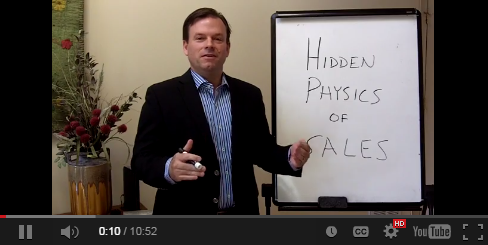How to Deal with a Delayed Client Engagement
A consultant asks “I have a new client who agreed to my proposal a few months ago, but we also agreed to delay the start of the work until the first of the year. Now I’m getting a bit nervous and I am also second-guessing the scope, timing, and fees of what I proposed. What should I do?”
Great question. Your situation represents a very common issue for consultants and coaches. Quite often, you may have a great meeting with a potential client and create an agreement for how you will work together, but you also agree to delay start of the engagement for some period of time. The reasons for delay may include, for example, holidays, travel schedules, other deadlines, availability of key people, and availability of funding. The client says “Yes, I want to do that, but I don’t want to do it right now. Let’s do it in a few months.”
I’d like to address a few key approaches to dealing with this situation: your mindset, how to deal with the client, and how to organize your practice to overcome this common challenge.
Let’s start with mindset. First, you must recognize and accept the reality that you don’t have a sale yet. Unless you have a signed agreement and have received payment, the client’s “yes” is not really binding. You will need to re-open the sales conversation as you approach the tentative start date.
Why? One simple reason: Things change. Between the time of the client’s initial “yes” and the tentative start time, all sorts of things can change, whether in the client’s business world, personal world, or both. Sometimes the client’s vision gets even bigger than where you initially started. Whatever the change, the motivation and urgency for your engagement may have changed as well.
You have a choice: you can resist and argue with this reality. Spend a lot of energy trying to convince yourself that you already made the sale, so you shouldn’t have to do any more work to get this client. OR you can choose to accept this reality and relax into the process.
If you are nervous or anxious about the delay, the key mindset shift is simply to let go of the sale before you talk to the client again. The absolute strongest place to come from is to die before battle, like the Samurai. Imagine that you talk to your prospective client and he says “I’ve changed my mind; I don’t want to do it at all.” Worst case scenario is that you lose business that you never really had in the first place. From this place of acceptance, you can now look at much more powerful and creative ways to serve the client as you reconnect.
The main purpose of your next conversation is to re-establish the context for the sale. Ask a very simple question: “What’s new?” Listen and allow this thread to go wherever it needs to go. Then ask “So how does this impact your vision (or goals or priorities)?” Let the client tell you. “How has your thinking on this issue changed?” Let the client tell you.
Now, instead of simply re-introducing your proposal, shift it to the new context and essentially create a new agreement. The strongest place to come from is for you to introduce this new context. Remember, the client is quite possibly fearful of having to tell you “no” (since people very often are afraid of telling others no for fear of disapproval.) So the easiest way to handle it is to give them permission.
Here’s what you could say: “Based on these changes, I’m not sure our original agreement still makes sense. Maybe it does, but if not, that’s ok. I’ve been thinking that there may be some other arrangements that might work better for you; and I bet you might have some ideas on that, too.”
Notice, that you have let the client off the hook AND you’ve given her four options. You’ve basically told her: 1. You could say yes to the existing agreement; 2. You could say no to the existing agreement; 3. You can consider my ideas for a new agreement; and 4. You can offer your own ideas for a new agreement. All you’re really doing is reopening the conversation. From here, you slide gently back into the sales conversation and if the client is open, create a new agreement that makes sense based on new priorities, new capabilities, and timing/funding considerations.
The final point is to put this one situation in the context of your entire practice. Sometimes when we think we have a new client, we can ease up on our prospecting activity. As we’ve seen above, you don’t really have the sale, so easing up can come back to haunt you. If/when the engagement does fall through, now what? You start to panic. Much better to maintain a constant flow of sales conversations with multiple clients. You stay in the game and you are not subject to the timing and commitment of any particular client. Remember, “Beware of Bluebirds and Elephants!”




